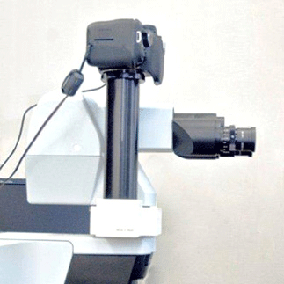Adapters and Systems
Benefits of Using a Live View Interchangeable Lens Camera
No annoying and unproductive streaking since the live view ILC camera provides 24 fps video.
- Larger field of view because of the large sensor
- Higher resolution for your lower power objectives (<40X) because there are 18 or more megapixels
- Computer control capabilities
- High sensitivity for capturing still fluorescent images
- Automatic exposure control features
- In addition to using the manufacturer’s software, a universal image editing program such as Photoshop maybe used with SLR type cameras as well as the new mirrorless digital cameras.
- The camera can be removed easily and quickly from the microscope and used for other purposes.
- A live view ILC camera can be purchased for less than $900.
- Most OSC adapters are available for under $600.
Camera to Microscope Adapters
Our adapters exploit consumer live view digital single lens reflex cameras. These cameras enable precise focusing and specimen framing at 24 fps. We suggest the Canon T3i (600D) with 18 megapixels on a large chip to enable sharp images with a large field of view. The T3i as well as some other cameras have a means of connecting (teather) to a computer and controling camera functions without touching the camera.
Also, digital SLRs provide the ability to detach the camera lens and attach our adapter. This enables microscopes with a flat top trinocular photoport to directly project the image from the microscope factory lens system onto the image sensor. For microscopes with a phototube, a transfer lens is required in order to provide mechanical clearance.
Microscope Alignment
The benefits of the large field of view offered by live view interchangeable lens cameras require that the field of view be uniformly illuminated. Uniform illumination will be achieved by aligning your microscope with the kohler illumination method. The following link leads to an excellent explanation of kohler illumination as well as a detailed alignment procedure: http://zeiss-campus.magnet.fsu.edu/print/basics/kohler-print.html
Examples of Adapter Configurations
The following figures represent various microscope/camera/computer configurations. Potential applications are presented in the figure descriptions:
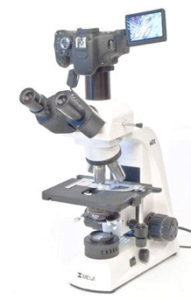
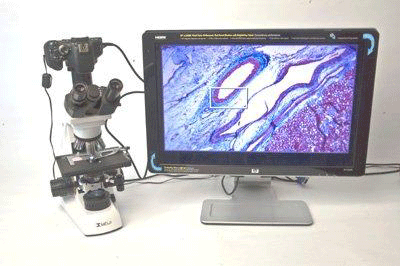
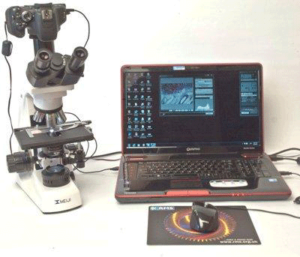
Fig.1. Stand alone camera.
This configuration is useful for multiple users. Each user brings a storage drive and captures desired images then takes the stored images away. Focusing at 24 fps is accomplished by pressing a magnification button on the camera. Enlargements of 5X and 10X are selectable.
Fig.2. System with HD monitor.
This configuration is also useful for multiple users plus conferences. Spectacular high definition images are presented at 24 fps by connecting an HDMI mini to HDMI cable from the camera to the monitor.
Fig.3. Camera teathered to and controlled by a computer.
This configuration is effective for a single user. The camera controller enables the images to be stored directly on the computer hard drive in a file of the user’s choosing as well as simultaneous camera storage. The image capture, exposure, white balance and other settings may be made by mouse clicks on the camera controller.

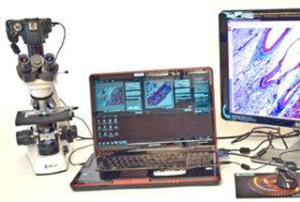
Fig. 4. One optional computer screen display.
This figure presents a layout of the main screens available to control the image capture parameters. The images are automatically stored on the camera storage drive, user selected computer file, or both. Note that the ability to bypass the camera firmware and adjust the raw image with the more powerful computer processor is available. Both the raw and camera processed images may be captured simultaneously.
Fig. 5. Camera teathered to computer with auxilliary monitor.
This configuration shows a supplemental monitor, used as the edit screen and for conferences.This figure presents a layout of the main screens available to control the image capture parameters. The images are automatically stored on the camera storage drive, user selected computer file, or both. Note that the ability to bypass the camera firmware and adjust the raw image with the more powerful computer processor is available. Both the raw and camera processed images may be captured simultaneously.

Fig.1. Stand alone camera.
This configuration is useful for multiple users. Each user brings a storage drive and captures desired images then takes the stored images away. Focusing at 24 fps is accomplished by pressing a magnification button on the camera. Enlargements of 5X and 10X are selectable.

Fig.2. System with HD monitor.
This configuration is also useful for multiple users plus conferences. Spectacular high definition images are presented at 24 fps by connecting an HDMI mini to HDMI cable from the camera to the monitor.

Fig.3. Camera teathered to and controlled by a computer.
This configuration is effective for a single user. The camera controller enables the images to be stored directly on the computer hard drive in a file of the user’s choosing as well as simultaneous camera storage. The image capture, exposure, white balance and other settings may be made by mouse clicks on the camera controller.

Fig. 4. One optional computer screen display.
This figure presents a layout of the main screens available to control the image capture parameters. The images are automatically stored on the camera storage drive, user selected computer file, or both. Note that the ability to bypass the camera firmware and adjust the raw image with the more powerful computer processor is available. Both the raw and camera processed images may be captured simultaneously.

Fig. 5. Camera teathered to computer with auxilliary monitor.
This configuration shows a supplemental monitor, used as the edit screen and for conferences.This figure presents a layout of the main screens available to control the image capture parameters. The images are automatically stored on the camera storage drive, user selected computer file, or both. Note that the ability to bypass the camera firmware and adjust the raw image with the more powerful computer processor is available. Both the raw and camera processed images may be captured simultaneously.
Adapters
| Manufacturer | Model | Trinoc | Adapter | Figure | Price | Type |
|---|---|---|---|---|---|---|
| Meiji | ML2000, ML5000 | MA603, MA655 | OS44 | 6 | $563.00 | Tube Lens |
| Meiji | EM | TR | OS49 | 7 | $350.00 | Direct Projection |
| Nikon | Diaphot | Photoport | OS75 | 8 | $525.00 | Direct Projection |
| Nikon | Labophot, Diaphot | F-Head | OS76 | 9 | $458.00 | Tube Lens |
| Olympus | CKX41, BX | U-IT137, U-TR30 | OS83 | 11 | $350.00 | Direct Projection |
| Meiji | MT, U50, TC | MA816/05, MA816, MA816/10, MA1034 | OS84 | 12 | $375.00 | Direct Projection |
| Nikon | SMZ-10 | Standard | OS85 | 13 | $580.00 | Tube Lens |
| Nikon | Eclipse | C-TE | OS87 | 14 | $576.00 | Direct Projection |
| Nikon | Labophot, Optiphot | T-Head | OS89 | 15 | $525.00 | Tube Lens |
| Olympus | SZ40 | OS91 | 16 | $425.00 | Direct Projection | |
| Olympus | BX | U-ETBI | OS92 | 17 | $940.00 | Tube Lens |
Photos of Adapter Designs Connected to Microscopes and Live View Camera
The following figures present pictures of our adapter designs connected to their respective microscopes and a Canon T3i live view camera. The prices do not include required taxes or shipping — only the adapter equipment for your live view digital SLR camera.
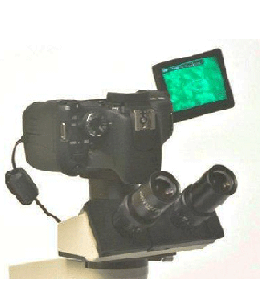
Fig. 6 – OS44 Meiji ML Series:
$563
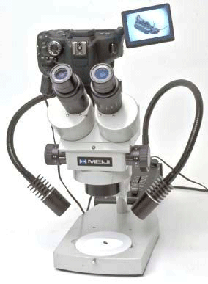
Fig. 7 – OS49 Meiji EMZ-TR:
$350
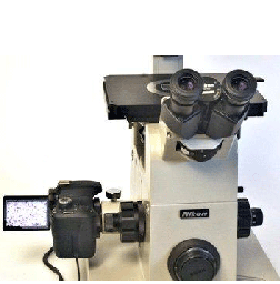
Fig. 8 – OS75 Nikn Diaphot:
$525
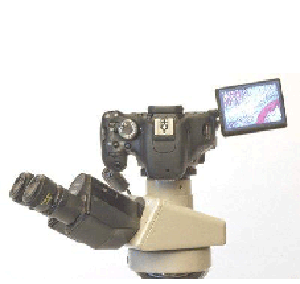
Fig. 9 -OS76 Nikon F-Head:
$458
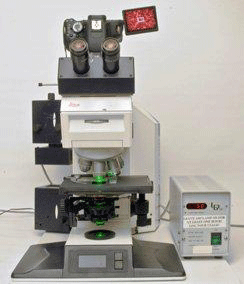
Fig. 10 – OS80 Leica 551 001 Head: $580
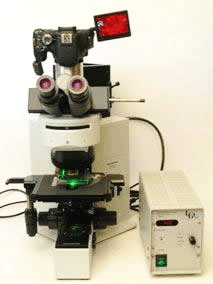
Fig. 11 – OS83 Olympus U-TR30:
$350
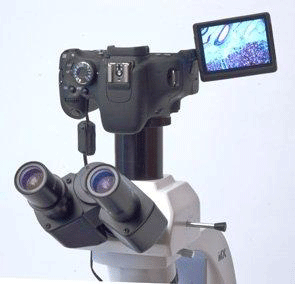
Fig. 12 – OS84 Meiji MT:
$375
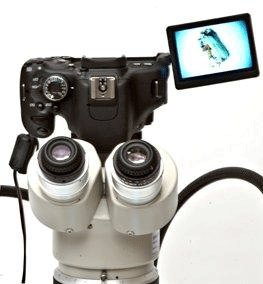
Fig. 13 – OS85 Nikon SMZ10:
$580
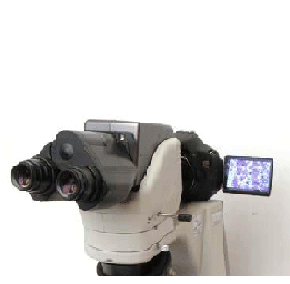
Fig. 14 – OS87 Nikon C-TE Head:
$576
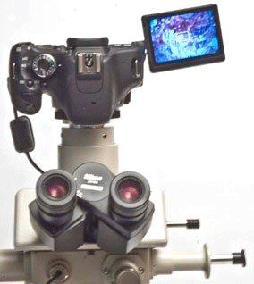
Fig. 15 – OS89 Nikon T-Head:
$525
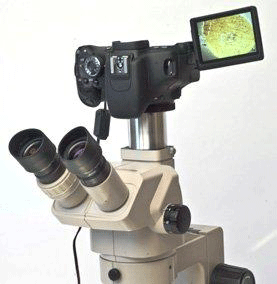
Fig. 16 – OS91 Olympus SZ40:
$425
